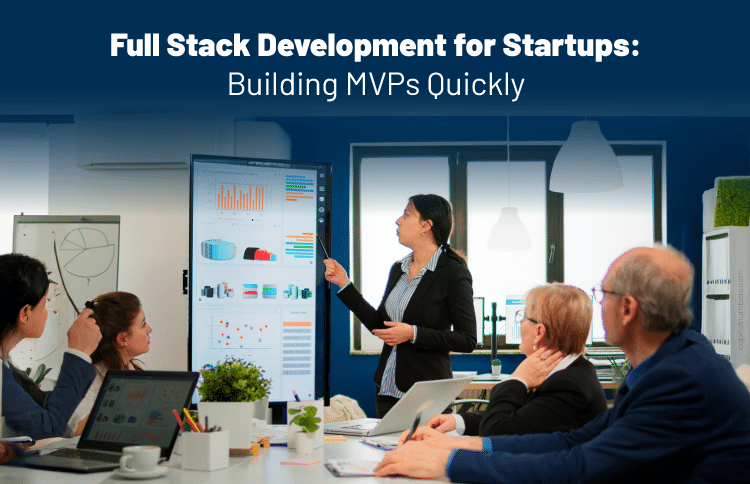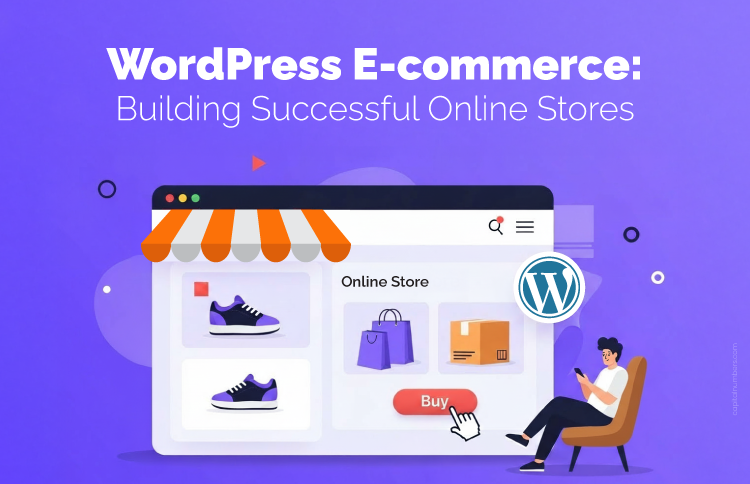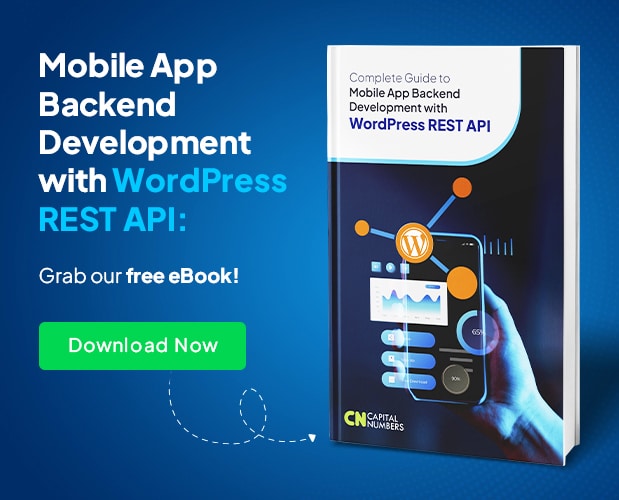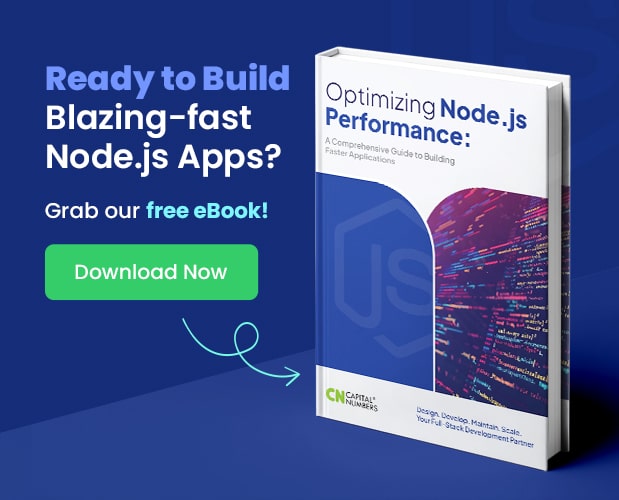Full Stack Development for Startups: Building MVPs Quickly
Table of Contents
In the startup world, speed decides survival. The faster you launch and test, the sooner you know if your idea has wings or needs a pivot. Startups thrive on speed, adaptability, and innovation. Customers expect new features constantly, investors demand traction, and markets evolve in real time. In this environment, founders must embrace the mantra of ship fast, learn faster.
One of the most powerful approaches to achieve this is full stack development for MVPs. With the right strategies, technologies, and team setup, startups can build robust products quickly, validate ideas, and iterate based on user feedback while conserving runway. This guide gives you a practical playbook to help you get there.
Why MVPs Matter for Startup Growth
An MVP is not a toy version of your product, it is the truth serum that tells you whether your idea deserves a future.
An MVP (Minimum Viable Product) is more than a simplified version of your product. It is a functional and usable solution designed to test hypotheses about your customers, their needs, and your market. Startups that understand the purpose of an MVP can save months of wasted effort and redirect resources into what truly matters.
The goals of an MVP are straightforward yet powerful. First, it validates whether the customer pain points you believe exist actually matter to them. Second, it allows you to test product-market fit quickly using feedback from real-world users. Third, it gives you a way to attract investors with a working demo instead of just a concept. And finally, it reduces your overall risk by helping you avoid long development cycles building the wrong product.
However, many founders get this wrong. They often mistake an MVP for a prototype, thinking that a few wireframes or a clickable mockup are enough to test a business idea. Others assume that an MVP can be buggy and unstable, forgetting that customers still need to experience the product as credible. And some build “lite” products without thinking about scalability, which makes it harder to grow when demand comes in. The reality is that a good MVP should be usable, reliable, and structured enough to evolve with success.
You May Also Read: 4 Steps to a Successful MVP
The Power of Full Stack Development in MVP Building
When your startup is racing against time, having builders who can deliver end-to-end is like having sprinters who can also run the marathon.
Full stack development is the ability to build both the frontend and backend of an application, including the infrastructure to support deployment. In simple terms, a full stack developer can design the user interface, connect it with servers and databases, and then deploy it so customers can use it.
For startups, this is not just a technical preference but a survival advantage. A single full stack developer can take an idea from concept to deployment quickly, cutting down the need for multiple specialized hires. This speed to market is invaluable when your runway is limited. Additionally, fewer developers mean lower costs, which is critical in the early stages. Full stack development also makes your team more flexible. Features can be designed and evolved without handoffs between siloed teams, which often slow things down. Most importantly, full stack developers think holistically, understanding how decisions in user experience can impact backend performance and scalability, and vice versa.
When speed and adaptability are everything, full stack is not optional; it is essential.
Core Principles for Building MVPs Quickly
The MVP journey is not about perfection, it is about direction.
To build an MVP effectively, there are a few core principles that every startup should follow.
First, focus on delivering core value. The temptation to add extra features is strong, but you must solve one problem better than anyone else. Anything beyond that distracts from your goal. Before building, ask: what single problem is my customer desperate to solve? What is the shortest path from problem to solution? Which features are must-have versus nice-to-have?
Second, leverage existing tools and frameworks instead of reinventing the wheel. Use pre-built UI libraries like Material UI or Tailwind for design, authentication services like Firebase Auth or Auth0, payment platforms like Stripe or Razorpay, and hosting platforms like Vercel or AWS Amplify. These services allow you to focus on the unique aspects of your product rather than infrastructure that others have already perfected.
Third, build for iteration rather than perfection. The initial codebase does not need to scale to millions of users from day one, but it should be clean, simple, and ready for quick changes. Architecting for iteration allows you to pivot quickly without technical paralysis.
Finally, automate as much as possible. Automating deployments with CI/CD pipelines, managing infrastructure with tools like Terraform, and setting up monitoring with Sentry or Datadog all save valuable time. Automation accelerates learning cycles and reduces repetitive tasks.
Choosing the Right Tech Stack for Speed and Growth
Technology should accelerate your startup, not drag you into endless debates.
Choosing the right technology stack can feel overwhelming, but the key is to prioritize speed, familiarity, and ecosystem support.
For web MVPs, proven frontend frameworks like React.js or Next.js allow rapid development and strong community support. Vue.js provides flexibility with a gentler learning curve, while Svelte is excellent for smaller, faster applications. On the backend, Node.js with Express offers scalability and a massive ecosystem, Django (Python) provides a batteries-included approach, and Ruby on Rails remains a startup-friendly framework. For databases, PostgreSQL is a reliable relational choice, MongoDB allows schema flexibility for quick iterations, and SQLite is handy for ultra-fast prototyping. Deployment is made easy with services like Vercel, Netlify, Heroku, or AWS Amplify.
For mobile MVPs, React Native and Flutter enable you to build cross-platform apps with one codebase, significantly saving time and resources. Swift and Kotlin should only be considered if your business is mobile-first with highly specialized needs.
In some cases, no-code and low-code options like Bubble, Webflow, Zapier, and Airtable provide an even faster route to validation. They allow you to create functional prototypes and workflows without heavy engineering. While not a long-term replacement for custom development, they are valuable for early testing.
The lesson is clear: avoid endless stack debates and choose the tools that will get you to market fastest without compromising stability.
You May Also Read: Why MERN and AWS Are the Future of Full-Stack Development
Engineering Best Practices for Fast MVP Delivery
A chaotic process will not get you to market faster, it will just get you stuck sooner.
Process matters as much as code when building an MVP. Adopting agile practices ensures that your team works in short, focused cycles. Weekly sprints are ideal because they allow you to deliver incremental features and immediately gather user feedback. Tools like Trello, Linear, or Jira help manage scope and keep projects on track.
Avoid over-engineering at all costs. Early-stage startups often make the mistake of building complex microservice architectures or custom authentication systems before proving product-market fit. Premature optimization is another trap – focus on stability and usability first, then worry about scaling later.
Prioritize developer velocity by giving your engineers the right environment to move quickly. Use boilerplates and starter kits to accelerate development. Keep local environments simple so onboarding new developers does not take weeks. Automate testing but start small – focus on smoke tests and critical user workflows.
Documentation should also be approached with balance. Avoid drowning in lengthy documents, but maintain a lightweight onboarding guide, document APIs as you build them, and record important decisions. This ensures continuity without slowing the team down.
Structuring Your Team for MVP Success
A lean, focused team beats a large, unfocused one every single time in the MVP stage.
When building an MVP, the right team structure is more important than team size. A lean founding team typically includes one or two full stack developers who can build the product end-to-end, a product-minded founder or product manager to keep priorities aligned, and a designer to ensure usability. This combination balances technical execution with business direction.
Choosing between outsourcing and in-house development is a strategic decision. In-house teams provide continuity and can be ideal for founders who want day-to-day involvement in product evolution. However, outsourcing to a reliable technology partner offers access to a broader talent pool, faster scalability, and cost efficiency without the overhead of full-time hiring. Unlike freelancers, who may lack accountability and long-term commitment, established outsourcing partners bring structured processes, proven expertise, and the ability to deliver consistently. Many successful startups adopt a hybrid model, keeping product leadership in-house while outsourcing development or specialized tasks to trusted partners, ensuring both speed and quality.
Strong communication practices keep the team aligned. Daily standups provide quick progress updates, weekly roadmap reviews ensure priorities are clear, and bi-weekly sessions dedicated to user feedback keep the product grounded in reality. Collaboration tools like Slack, Notion, and Linear make asynchronous workflows efficient and transparent.
You May Also Read: Balancing Cost & Quality in Software Development Outsourcing
Scaling Beyond the MVP
The MVP is just your launchpad. Once you take off, the real challenge is not crashing under your own growth.
If your MVP gains traction, the real test begins. Scaling both technology and teams requires careful planning.
Refactoring should be approached gradually. Instead of halting everything for a full rewrite, schedule specific tech debt sprints. Focus on the parts of the system that get the heaviest use, such as authentication, payments, and integrations.
Scaling technology means evolving your deployment and infrastructure. Startups often begin with Heroku or Vercel for simplicity, but as traffic grows, moving to AWS or GCP with more robust setups may be necessary. Introduce observability tools like logging, monitoring, and error tracking to maintain reliability. Databases may need to evolve from single instances to managed clusters.
As the product grows, the team will need to expand. Hiring specialists such as frontend experts, backend developers, QA engineers, and DevOps professionals will help handle complexity. Just as importantly, your culture must shift from pure speed to sustainable growth, ensuring that developers remain aligned with user outcomes.
Common Pitfalls Startups Must Avoid
Most MVPs fail not because the idea was bad, but because the execution was distracted.
Founders must be aware of common traps that derail MVPs. Building for scale too early is a frequent mistake, leading to overcomplication before proving demand. Adding too many features creates bloated products that never launch. Neglecting DevOps basics results in products that cannot be deployed or maintained effectively. Security oversights, even at the MVP stage, can create serious risks. Finally, poor documentation and onboarding slow down growth when new team members join.
The key is discipline: stay lean, stay focused, and remember that the goal of an MVP is validation, not perfection.
Real-World Examples and Case Studies
The best lessons come from those who have already battled in the trenches.
Consider the case of a SaaS productivity tool. A three-person team built the MVP in just six weeks using Next.js, Node.js, and PostgreSQL, while leveraging Firebase Auth for authentication and Stripe for payments. The result was five pilot customers and enough traction to raise seed funding. This example shows the power of combining a lean team, a practical stack, and strict focus on validation.
Another example is a mobile-first food delivery app. Built by just two developers using Flutter and Firebase, the app’s design was outsourced, allowing the core team to focus entirely on the order flow. Within eight weeks, they validated demand in a single city and quickly pivoted based on feedback. This highlights the value of speed, focus, and smart outsourcing.
These stories underline a consistent pattern: small teams, practical stacks, clear priorities, and a relentless focus on speed.
A CTO’s Practical Checklist for Startup MVPs
If you follow this checklist, you will avoid 90 percent of the mistakes founders make.
- Distinguish must-have features from nice-to-have features.
- Select a lean, proven tech stack.
- Set up version control and CI/CD pipelines from day one.
- Automate deployments to avoid manual overhead.
- Use third-party services for common needs like auth, payments, and hosting.
- Release your product to users as early as possible.
- Gather feedback weekly and feed it into your roadmap.
- Do not scale until you have traction.
- Iterate relentlessly without overthinking.
Need software built around your business goals?
At Capital Numbers, we develop custom software that’s reliable, scalable, and tailored to your specific needs. Whether you’re improving internal systems or launching a new product, our experienced team delivers solutions that work.
Get in touch to discuss your project today.
Conclusion
Your MVP is not your final product, it is your test flight. Launch it, learn from it, and evolve.
Full stack development gives startups the speed, affordability, and flexibility to validate ideas before resources run dry. The most successful founders are those who stay pragmatic, focus on customer value, and keep momentum alive. Build lean, release early, learn fast, and improve constantly. That is how startups grow from idea to impact.
For startup leaders, the message is clear. The MVP is your gateway to building trust with customers and investors alike. It does not have to be perfect, it has to be real. By embracing full stack approaches, leveraging existing tools, and structuring a lean but sharp team, you give your idea the best chance to succeed. Once in the market, commit to listening, learning, and adapting. Momentum is everything, and with the right discipline, your MVP can be the start of something extraordinary.


















